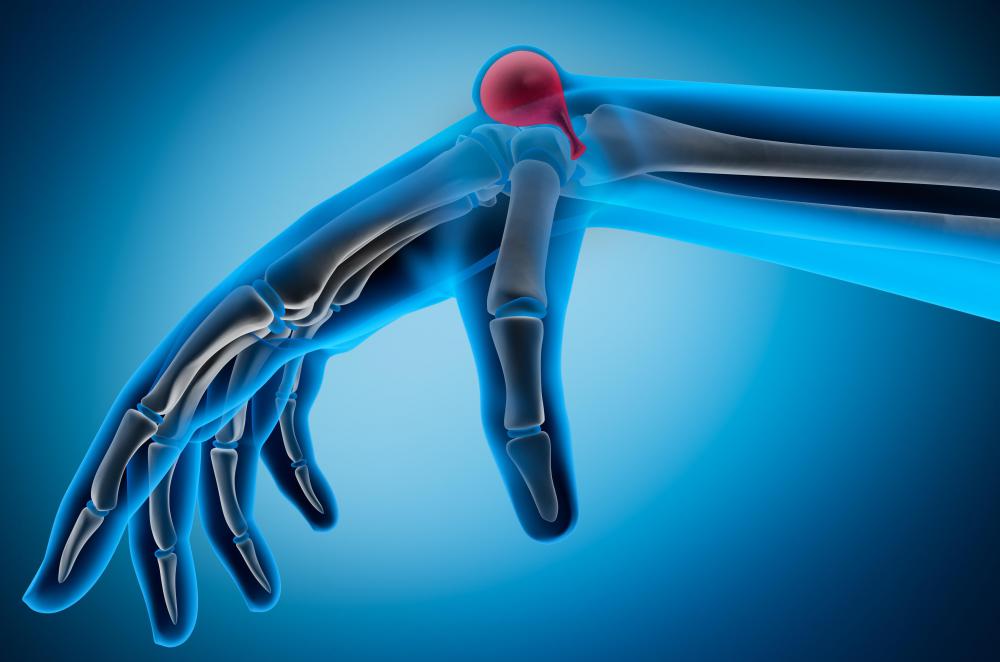At WiseGEEK, we're committed to delivering accurate, trustworthy information. Our expert-authored content is rigorously fact-checked and sourced from credible authorities. Discover how we uphold the highest standards in providing you with reliable knowledge.
What Causes Ganglions?
A ganglion is a non-cancerous, small cyst that forms on the body, usually on the wrists and hands, but sometimes on the ankles, feet, shoulders or knees. The cyst looks like a bump under the skin and is filled with a clear fluid. This fluid usually consists of materials that exist in the joints under normal circumstances. Ganglions usually grow on tendon sheaths or joint capsules and can form suddenly. Although it is difficult for doctors to pinpoint the exact cause of a ganglion, there are a few reasons why they may form.
One type of ganglion, called a mucous cyst, is typically associated with patients who have osteoarthritis of the hand. The cyst typically forms on the top joint of the finger near the nail. These types of ganglions are usually very small, but they can be painful.
Ganglions tend to form on older children and adults. The age range most affected is from 10 to 40 years old, with women experiencing the condition three times more often than men.

One theory of how these cysts are caused relates to cysts that form due to an injury or repetitive movements. According to the theory, ganglions can occur when there is a breakdown of connective tissue or when use over time causes damage to the joint. One area in particular becomes weakened due to either injury or repetitive use. The fluid that is normally in the joint area then leaks through this area and builds up in a sac, causing this disorder.

In the case of injury or damage due to repetitive movements, the affected area becomes inflamed and irritated, causing the buildup of fluid. Ganglions can grow in relation to activity level: more activity using an irritated or damaged joint causes more fluid to collect in the cyst.
Ganglions are easy to diagnose by sight and feel. Sometimes, a doctor will order an X-ray to rule out injury or osteoarthritis. These cysts are harmless and usually painless, but they can cause problems if they grow large and put pressure on tendons or nerves. This can cause discomfort and affect the use of the joint.
AS FEATURED ON:
AS FEATURED ON:














Discussion Comments
What is the most effective way to treat a recurring ganglion? Mine gets quite large and causes discomfort.
Post your comments